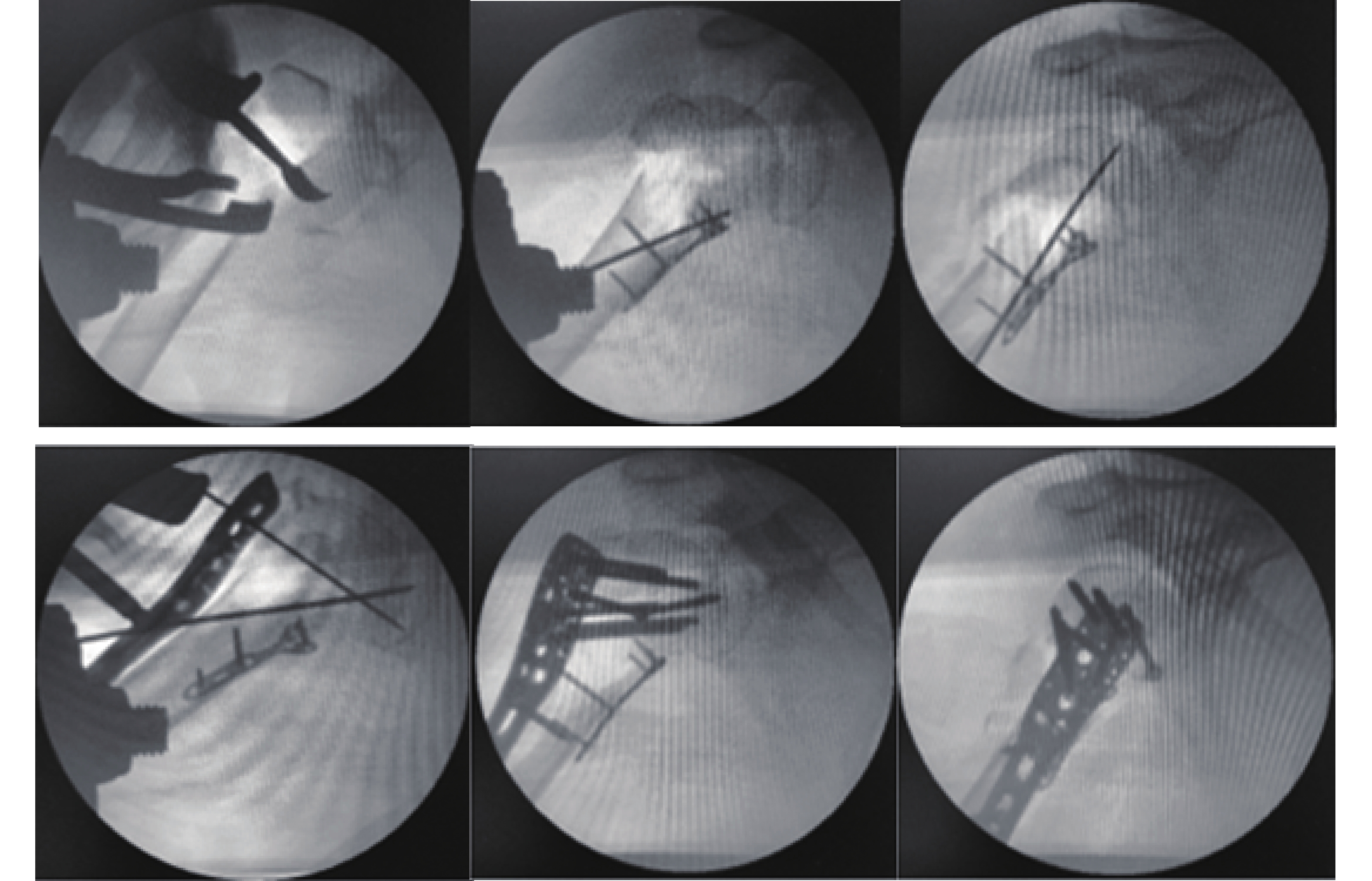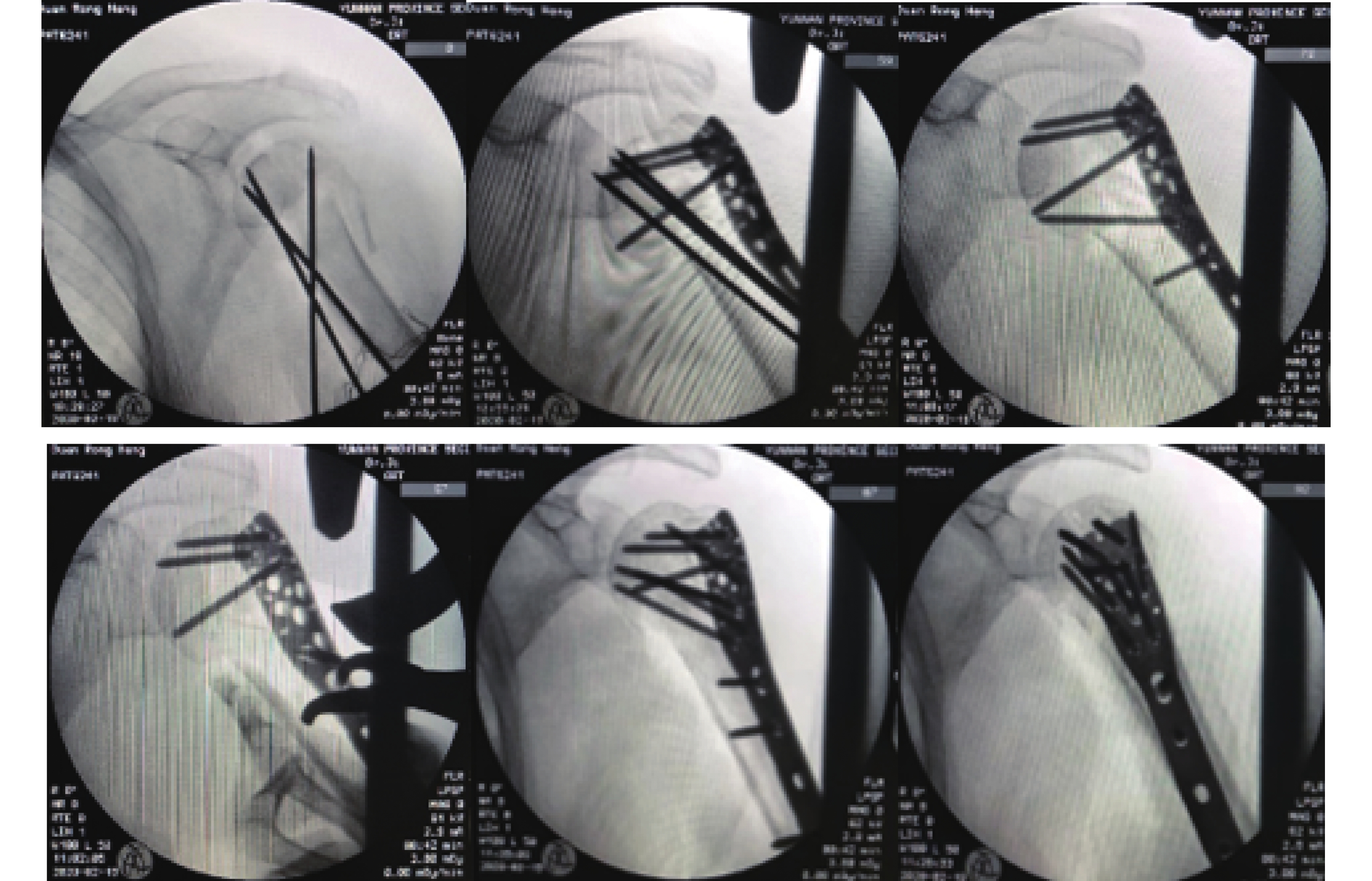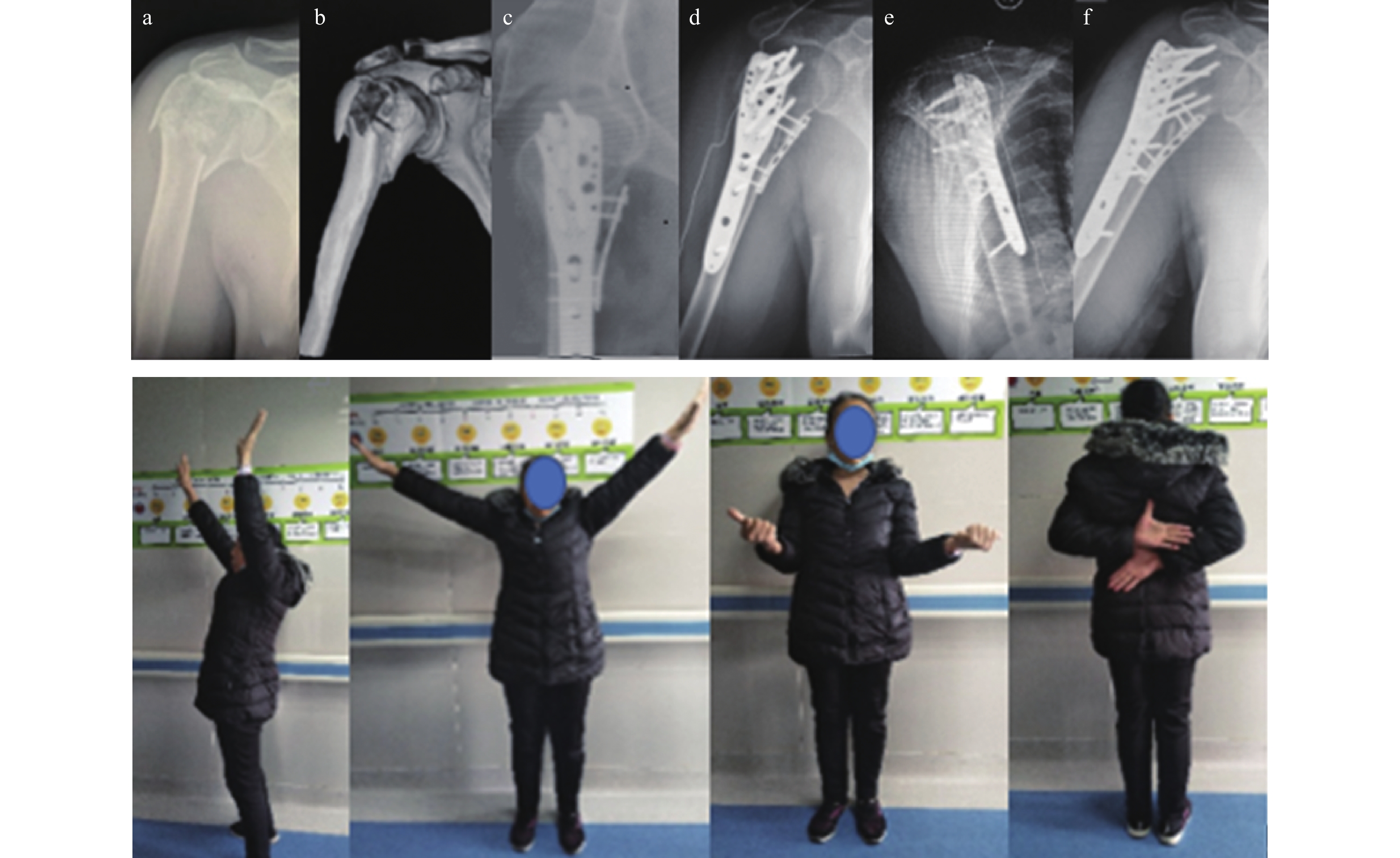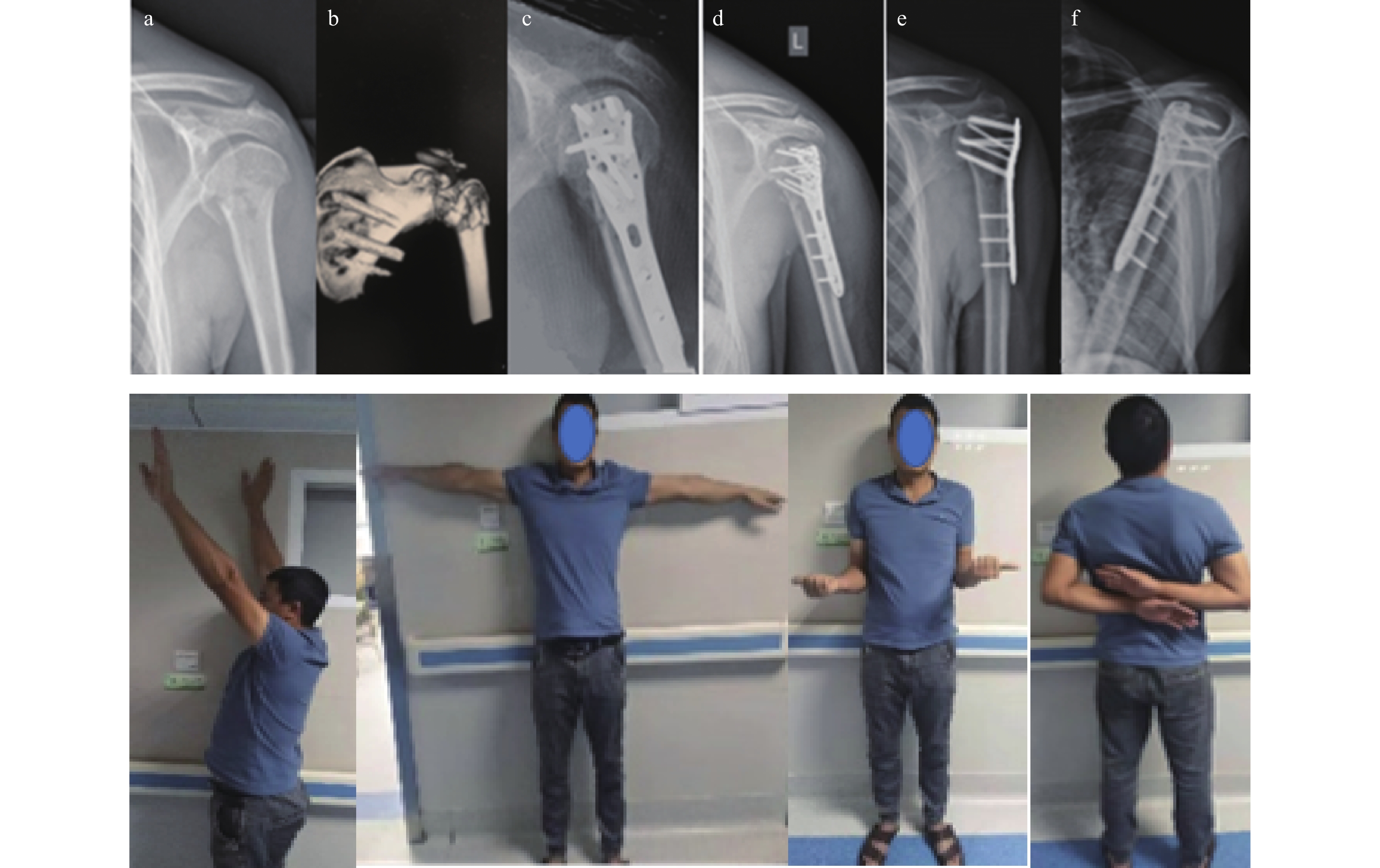The Analysis of Exposure and Influencing Factors of Pyrethroid Pesticides in Rural Women during Different Pregnancy Stages in Xuanwei,Yunnan Province
-
摘要:
目的 了解农村妇女每个孕期暴露于拟除虫菊酯类农药的情况。 方法 自2014年12月至2016年12月间在宣威农村地区选取2个乡镇,招募216名怀孕至分娩的妇女入组,在妇女孕早、中、晚3期进行问卷调查,并使用超高效液相色谱串联质谱法检测妇女各孕期尿样拟除虫菊酯类农药代谢产物3-PBA和cis/trans-DCCA,用SPSS进行重复测量方差分析,对妇女2个孕期拟除虫菊酯类农药暴露水平及其影响因素进行分析。 结果 (1) 大部分孕期妇女孕期仍然务农且自我报告孕期未接触主动接触农药,报告自己在孕期接触过农药的妇女3个孕期均未超过1.4%。然而实验室检测发现拟除虫菊酯类农药孕早、中、晚3期暴露率均超过90%,孕全程均暴露于拟除虫菊酯类农药的暴露率为67.1%。实验室检出率明显高于问卷调查结果;(2) 妇女孕早、中、晚3期尿拟除虫菊酯类农药代谢产物3-PBA中位数分别为3.61 ng/L、3.60 ng/mL、3.57 ng/mL, cis/trans-DCCA中位数分别为49.10 ng/mL、45.45 ng/mL、47.45 ng/mL。3个孕期拟除虫菊酯类农药暴露处于国内中等水平,超过国外大多数报道。重复测量方差分析妇女孕期拟除虫菊酯类农药暴露,结果显示,孕妇居住地、受教育程度与妇女3个孕期拟除虫菊酯类农药代谢产物值之间存在交互作用(F孕期×孕妇居住地=3.183、F孕期×孕妇受教育程度=2.731,P < 0.05),不同孕期cis/trans-DCCA浓度的孕妇民族组间效应差异有统计学意义(F孕妇民族=4.497,P < 0.05),可认为孕期汉族的cis/trans-DCCA检出较少数民族高。孕早、中期cis/trans-DCCA测定结果均高于孕晚期测定结果(LSD法P < 0.05)。卡方检验尚未发现妇女年龄、民族、受教育程度、工作情况、居住地、家庭年收入、季节性与孕期拟除虫菊酯类农药暴露间差异有统计学意义(P > 0.05)。 结论 本研究发现宣威农村妇女大多对农药暴露的认知程度低,绝大多数妇女存在拟除虫菊酯类农药不同程度的暴露,而且,孕早、中期暴露水平明显高于孕晚期,当地妇女居住地、受教育程度、家庭年收入对不同孕期妇女拟除虫菊酯类农药暴露水平有影响。建议在农村地区加强孕期健康教育,提高孕期健康意识,加大环境农药监测与管控力度,减少妇女孕期拟除虫菊酯类农药暴露。 Abstract:Objective The purpose of the study is to understand the exposure of rural women to pyrethroid pesticides during each pregnancy stage. Methods From December 2014 to December 2016, 216 pregnant and postpartum women with the average age between 24.81±5.256 years old were recruited from 2 townships in Xuanwei rural area. Results In this study, the majority of pregnant women were still engaged in farming during pregnancy and self-reported no active exposure to pesticides during pregnancy. The self-reporting exposure rates among the three trimesters were no more than 1.4%. However, Laboratory testing found that the exposure rates of pyrethroid pesticides among the three trimester of pregnancy were exceed 90.0%, and the total of 67.1% of women exposed to pyrethroid pesticides in every trimester of gestation. Women exposure rates of pyrethroid by laboratory detection were significantly higher than those by questionnaire. In the first, the second and the third trimester, the medians of urine pyrethroid metabolites 3-PBA were 3.61 ng/ml、3.60 ng/ml、3.57 ng/ml, respectively, and the medians of urine cis/trans-DCCA, pyrethroid metabolites, distributed 49.10 ng/ml、45.45 ng/ml、47.45 ng/ml, respectively. The pregnancy exposure to pyrethroid pesticides was in the middle level of domestic research, but exceeded the level of most foreign reports. The result of women who exposed to pyrethroid pesticides in each trimester of gestation by Repeated Measures Define Factor(s) showed that address, education and family income had interaction with the three trimester pyrethroid metabolites amount (F gestation×address=3.183, F gestation×education=2.731, P<0.05), and the amount by laboratory test in the first trimester and the second trimester were higher than that in the third trimester(LSD, P < 0.05). Chi-square test indicated that there were no significant differences in the amounts of pyrethroid exposure among women age groups, between the minority and the majority, among different education levels, between on work and stopping work, between the two towns, across different family income and among the four seasons. Conclusion Rural pregnancy women are with low awareness of pesticide in Xuan wei. The vast majority of pregnancy women are exposed to pyrethroid pesticides in varying degrees and in the middle level of domestic research. Pyrethroid exposure in the third trimester is likely less serious than the other trimesters. The address, education and family income affect the pyrethroid exposure level. Therefore, it is necessary to strengthen health education and improve the health consciousness of pregnant women to reduce pyrethroids pesticides exposure as much as possible in rural areas. -
Key words:
- Pregnancy /
- Pyrethroid pesticides /
- Exposure /
- Rural area
-
肱骨近端骨折发生率约占全身骨折的50%以上[1],仅次于髋部骨折及桡骨远端骨折[2-3]。大多数年轻人由高能量损伤所致,而低能量损伤常见于老年骨质疏松患者。临床医生可依据肱骨近端骨折Neer分型制定治疗方案[4]。复杂肱骨近端骨折多见于Neer三、四部分骨折,移位大、粉碎严重,缺乏内侧柱支撑,预后差。尽管临床上有多种手术方法,然而最佳手术方法目前仍争执不一。
切开复位锁定钢板内固定治疗肱骨近端骨折的稳定性及生物力学方面均有优势而已较为成熟[5]。然而当面临复杂肱骨近端骨折内侧骨皮质不完整时,术后肱骨头内翻塌陷、螺钉切出等并发症发生率仍然较高[6-7],手术翻修率高达25%[8],大部分原因是锁定钢板髓外偏心固定且未能完全恢复内侧柱支撑结构的稳定性。而采用双钢板固定即锁定钢板联合前侧附加钢板固定相当于重建了内侧柱支撑结构,可分散螺钉-骨界面应力,对抗肩袖的持续内翻应力,有效减少了因锁定钢板弊端所带来的一系列并发症,但却增加了肱骨头坏死、骨不连风险。本研究通过对比双钢板与锁定钢板治疗复杂肱骨近端骨折的临床疗效,旨在探寻最佳治疗方法。
1. 资料与方法
1.1 资料来源
回顾性分析2015年01月至2020年01月于昆明医科大学第四附属医院骨与创伤外科接受手术切开复位内固定治疗的57例肱骨近端骨折患者。均符合纳入标准:影像学X线或CT检查确诊肱骨近端Neer三、四部分骨折[4];外伤所致的新鲜闭合性骨折;依从性好,能遵医嘱定期返院复查X线片,按要求认真配合完成肩关节功能锻炼;临床资料及随访资料完整;予签署知情同意书。排除标准:病理性、陈旧性骨折;合并重要血管神经损伤;凝血功能障碍;严重精神疾患、全身情况差,无法耐受麻醉、手术。按固定方式的不同,分为A组(双钢板组,28例)和B组(锁定钢板组,29例)。所有患者随访时间均超过1 a半。受伤至手术时间3~7 d。2组患者一般资料见表1,比较差异均无统计学意义(P > 0.05)。
表 1 2组纳入患者基线资料比较[($\bar x \pm s $ )/n]Table 1. Comparison of baseline information of patients included in the 2 groups [($\bar x \pm s $ )/n]组别 A组 B组 χ2/t P 例数 28 29 − − 性别(男/女) 11/16 13/16 0.095 0.757 平均年龄(岁) 56.12 ± 8.02 57.08 ± 9.34 −0.416 0.679 受伤部位(左/右) 16/12 18/11 0.144 0.705 致伤原因(高坠伤/跌倒伤/车祸伤) 3/12/13 1/15/12 1.373 0.503 受伤至手术时间(d) 5.21 ± 0.91 5.34 ± 1.17 −0.357 0.721 骨折类型(Neer三部分/四部分) 17/11 21/8 0.877 0.349 1.2 方法
1.2.1 治疗
全身麻醉,沙滩椅位,取标准的胸大肌-三角肌间隙入路。A组:沿三角肌与胸大肌间隙分离显露骨折端,寻找肱二头肌长头肌腱并确认结节间沟两侧大、小结节;先用不可吸收缝线分别缝合肱骨头上肩袖止点,牵拉缝线提供张力来辅助显露肱骨头颈,利用骨膜玻璃器或顶棒撬拨肱骨头,复位钳嵌夹骨块复位并维持,见骨折复位满意后,于肱骨头内下区置入克氏针临时固定;先于前侧肱骨小结节顶点内下方约1.0 cm处放置一块1/3管状钢板或微型钢板固定以重建内侧柱支撑结构,然后再于肱二头肌间沟外侧约0.5 cm、大结节顶点下方的8~10 mm处放置肱骨近端锁定钢板,依次置入多枚锁定螺钉固定。术后常规放置切口引流管。 B组:仅于外侧置入肱骨近端锁定钢板,具体操作方法同A组。2组患者术中透视图分别见图1、2。
1.2.2 术后处理
(1)术后均预防性使用抗生素48 h;(2)术后48 h内给予拔除切口引流管(引流量 < 50 mL);(3)肩部钟摆样练习(术后第1~2天);被动活动锻炼(术后3 d~2周);逐渐以主动活动为主并开始练习正常活动(术后2周以后)。
1.2.3 术后随访及观察指标
所有患者术后1、2、3、6、9、12月定期返院复查X线片。(1)手术情况:比较2组患者手术时间及透视时间、术中出血量、切口引流量;(2)影像学复查结果:比较2组患者骨折愈合时间及末次随访时颈干角丢失量、肱骨头内翻角度、肱骨高度丢失量;(3)术后功能恢复情况:采用视觉模拟评分法(VAS)、肩关节Constant评分[9]评估;(4)术后并发症发生情况:螺钉切除关节面、肱骨头坏死、肩峰下撞击症、骨不连等。
1.3 统计学处理
本研究统计学分析采用SPSS 23.0软件。计量资料服从正态分布用均数±标准差(
$\bar x \pm s $ )表示,采用t检验行组间数据分析;计数资料以频数和百分比n/(%)表示,组间以χ2检验表示;P < 0.05表示差异有统计学意义。2. 结果
57例患者均顺利完成手术,术后均获得18~24个月随访。A组1例骨不连,3例肱骨头坏死;B组无骨不连,1例肱骨头坏死。其余患者骨折平均愈合时间(4.25±0.66)月,Constant功能评分平均(76.45±4.69)分;VAS评分平均(1.77±0.48)分;并发症发生率15.78%(9/57)。典型病例见图3、4。
2.1 2组患者手术情况比较
2组手术时间、透视时间及术中出血量相比较,A组均高于B组,差异有统计学意义(P < 0.05);2组患者术后切口引流量差别不大,组间比较差异无统计学意义(P > 0.05)。说明锁定钢板内固定术在缩短手术时间、透视时间以及减少术中出血量方面更优于双钢板内固定术,见表2。
表 2 2组患者手术情况比较($\bar x \pm s $ )Table 2. Comparison of surgical conditions between the 2 groups of patients ($\bar x \pm s $ )组别 n 手术时间(min) 术中出血量(mL) 术中透视时间(min) 术后切口引流量(mL) A组 28 126.14 ± 19.14 265.17 ± 29.45 41.35 ± 6.12 176.25 ± 25.98 B组 29 95.51 ± 18.67 225.51 ± 20.67 30.68 ± 6.77 164.65 ± 26.45 T − 5.901 6.114 6.228 1.669 P − < 0.001* < 0.001* < 0.001* 0.101 *P < 0.05。 2.2 2组患者术后临床疗效比较
A、B 2组骨折平均愈合时间分别为(4.52±0.53)月、(3.99±0.67)月,2组比较差异有统计学意义(t = -3.611,P = 0.001)。末次随访时,A组肩关节Constant评分高于B组;A组VAS评分、颈干角丢失量、肱骨头内翻角度、肱骨高度丢失量均明显低于B组,以上项目2组间比较差异均有统计学意义(P < 0.05)。说明双钢板内固定术与锁定钢板内固定术相比较,其固定效果更佳,能提供更为坚强和稳定的固定,关节功能恢复更好,但骨折愈合所需时间稍长,见表3。
表 3 2组患者术后临床疗效比较($\bar x \pm s $ )Table 3. Comparison of postoperative clinical outcomes between the 2 groups of patients ($\bar x \pm s $ )组别 n 骨折愈合
时间(月)术后颈干角
丢失量(度)肱骨头内翻
角度(度)肱骨高度
丢失量(mm)Constant功能
评分(分)VAS评分
(分)A组 28 4.52 ± 0.53 7.32 ± 1.03 3.48 ± 0.89 1.40 ± 0.10 79.62 ± 0.99 1.45 ± 0.11 B组 29 3.99 ± 0.67 9.51 ± 1.70 3.97 ± 0.92 1.70 ± 0.18 69.85 ± 0.80 2.45 ± 0.12 t − −3.611 −12.735 −2.253 −8.079 −6.634 −6.636 P − 0.001* < 0.001* 0.028* < 0.001* < 0.001* < 0.001* *P < 0.05。 2.3 2组患者术后各种并发症发生率比较
术后发生相关并发症A组5例,B组4例。A组螺钉切除关节面发生率较B组低,但A组肱骨头坏死、肩峰下撞击症、骨不连的发生率均高于B组,2组间比较差异均无统计学意义(P > 0.05)。7例患者进行了二次手术,导致二次手术最常见的原因是肱骨头坏死,本研究有4例患者,占二次手术患者的17.14%(4/7),予翻修行人工肩关节置换术;其次为螺钉切除关节面及肩峰下撞击症各2例。但2组患者总体并发症发生率均小于20%,见表4,典型病例见图3。
表 4 2组患者术后各种并发症发生率比较[n(%)]Table 4. Comparison of the incidence of various postoperative complications between the 2 groups of patients [n(%)]组别 n 螺钉切除关节面 肱骨头坏死 肩峰下撞击症 骨不连 总体并发症发生率 二次手术率 A组 28 0(0) 3(10.71) 1(3.57) 1(3.57) 5(17.85) 4(14.28) B组 29 2(6.89) 1(3.44) 1(3.44) 0(0) 4(13.79) 3(10.34) χ2 − 2.001 1.153 0.001 1.054 0.231 0.205 P − 0.157 0.283 0.980 0.305 0.630 0.650 3. 讨论
肱骨近端Neer三、四部分骨折较为复杂,预后不佳,非手术治疗包括闭合复位石膏外固定、颈腕带固定等方法,但非手术治疗后期易并发畸形、关节僵硬、创伤性关节炎等,大部分学者认为非手术治疗仅适用于无移位或轻微移位的肱骨近端骨折[10-11]。切开复位锁定钢板内固定作为众所周知的经典术式,其疗效已被临床所肯定。与三叶草钢板、髓内钉等术式相比,切开复位锁定钢板内固定具有操作简单、稳定性好、符合生物力学等特点,其钢板设计与骨膜间接接触,对骨折端血运影响较小。Oppeboen S等[12]对190例肱骨近端骨折患者采用锁定钢板治疗,术后无一例出现肱骨头内翻,与Bai L等[13]研究所得结论一致。Padegimas E M等[14]发现置入的肱骨距螺钉应位于距离肱骨距弓顶点12 mm以内或肱骨头底部25%以内。本研究置钉也依此法进行。但锁定钢板内固定自身存在一定缺陷,钢板位于骨折端张力侧而不是髓内中心固定方式,使得应力集中,负重过早会导致对侧骨折面裂开,近端螺钉易切出肱骨头,最终造成内固定失效,影响患者术后康复[15-16]。Thanasa等[17]报道锁定钢板治疗肱骨近端骨折术后螺钉切出率、肱骨头坏死率及再次手术率都超过了7%。Jost等[18]随访了121例采用锁定钢板内固定治疗肱骨近端骨折患者,同样出现较高的并发症发生率。本研究采用锁定钢板内固定治疗29例患者,术后出现2例螺钉切出关节面,1例肱骨头坏死,1例肩峰下撞击症,总并发症发生率13.79%。术后发生螺钉切出关节面考虑与这2例患者内翻型骨折有关,粉碎严重,内侧骨皮质破坏,内侧柱支撑不完整,锁定钢板自身的肱距骨螺钉虽然部分改善了内侧柱支撑的稳定性,但并没有完全解决这个问题[19]。
为了降低锁定钢板内固定术后失败率,类似肱骨中下段骨折固定方法[20],有学者提出了双钢板技术,即锁定钢板联合附加钢板共同构成“双柱支撑”结构,从而增强固定的稳定性。附加钢板以1/3管状钢板及微型钢板最常用,桡骨远端锁定钢板亦有学者应用,但临床疗效不确切。Wanner等采用双钢板固定技术治疗71名患者,取得满意临床疗效。相关学者证实了附加钢板改变了载荷分布,具有更高的刚度和极限载荷。但该技术对附加钢板放置位置的要求非常高,前侧放置时需尽量与外侧锁定钢板成直角,且需剥离较多软组织,对肱骨头周围的血运影响较大,本研究采用双钢板技术(肱骨近端锁定钢板联合前侧附加钢板)治疗28例患者,术后切口均一期愈合,无1例出现螺钉切除、肱骨头内翻等并发症,但有3例患者相继发生了肱骨头坏死,均手术翻修行关节置换术。笔者认为,骨折粉碎严重会对肱骨头血供造成破坏,术中放置前侧钢板时也会对骨折血运产生影响,但导致肱骨头坏死的最主要原因目前仍尚不能完全明确。但本研究随访发现,B组(锁定钢板组)亦有1例术后发生肱骨头坏死,与A组(双钢板组)相比较,差异无统计学意义(P < 0.05)。说明引起肱骨头坏死的主要原因更可能来源于骨折初期对肱骨头血运的破坏。但总体来说,双钢板技术在增加抗压刚度,增强轴向最大扭矩及抗剪切力,提供更坚强的固定,有效减少术后螺钉切出、肱骨头内翻畸形等并发症方面的优势是毋庸置疑的。本研究的局限性在于样本量小,随访时间短,未来的研究领域包括这种双钢板技术的生物力学性能、可能的技术改进以降低肱骨头缺血坏死风险的研究,以及进一步的临床研究以获得更大的样本群和长期的结果。
综上所述,锁定钢板内固定治疗复杂肱骨近端骨折手术操作简单,可提供较好的力学稳定性,有利于骨折早期愈合,但对于粉碎严重、内侧柱支撑破坏的骨折,双钢板在维持骨折端稳定性、防止继发性肱骨头内翻方面更具有优势,可作为一种较好的手术方式选择,但因术后肱骨头缺血坏死的发生率较高,且术中出血多,对操作者技术要求高,临床工作中应根据骨折类型及粉碎情况严格掌握适应症来加以选择应用。
-
表 1 研究对象社会人口学特征[n(%),n = 216]
Table 1. Socio-demographic characteristics of the study subjects[n(%),n = 216]
组别 人数(构成比) 民族 汉族 174(80.2) 少数民族 42(19.8) 受教育程度 小学及以下 71(32.9) 初中毕业 118(54.4) 高中/职校及以上 27(12.7) 从事职业 务农 177(81.6) 非务农 39(18.4) 妇女孕期工作情况 孕早期 继续工作者 104(48.1) 停止工作者 112(51.9) 孕中期 继续工作者 98(45.4) 停止工作者 118(54.6) 孕晚期 继续工作者 96(44.4) 停止工作者 120(55.6) 家庭年收入(元) < 10000 32(14.8) 10 000~ 56(25.9) 20 000~ 35(16.2) 30 000~ 11(5.1) 40 000~50 000 73(33.8) 拒绝回答 9(4.2) 表 2 孕期妇女拟除虫菊酯类农药自我报告暴露率与实验室检出率一致性检测
Table 2. Consistency test between self-reported exposure rate and laboratory detection rate of pyrethroid pesticides in pregnant women
孕期 问卷调查 实验室检测 Kappa值 暴露 非暴露 孕早期 暴露 2 0 0.001 非暴露 198 16 孕中期 暴露 3 0 0.001 非暴露 200 13 孕晚期 暴露 3 0 0.001 非暴露 200 13 孕全程 暴露 0 0 0 非暴露 145 71 表 3 妇女孕期拟除虫菊酯类农药暴露水平(ng/mL)
Table 3. Exposure levels of pyrethroid pesticides in pregnant women(ng/mL)
孕期 ≥L0D(%) P25 P50 P75 P95 最大值 最小值 3-PBA 孕早期 80.60 3.46 3.61 3.76 6.04 56.00 3.23 孕中期 84.30 3.43 3.60 3.79 4.63 22.30 3.23 孕晚期 81.00 3.40 3.57 3.76 4.94 29.30 3.24 cis/trans-DCCA 孕早期 59.70 19.60 49.10 86.70 202.00 427.00 0.95 孕中期 60.60 19.40 45.45 93.76 303.60 559.00 2.01 孕晚期 60.20 22.90 47.45 89.25 282.15 419.00 0.53 表 4 3个孕期拟除虫菊酯类农药暴露水平的影响因素
Table 4. Factors influencing exposure levels of pyrethroid pesticides during three pregnancy periods
组别 人数 孕期 F P 孕早期 孕中期 孕晚期 cis/trans-DCCA 孕妇居住地 倘塘镇 75 2.432±1.973 1.992±1.990 1.243±0.531 3.183 0.012* 热水镇 141 2.071±2.027 2.459±2.104 1.093±0.668 χ 2 0.000 0.000 0.371 P 1.000 1.000 0.542 孕妇民族 汉族 174 2.330±2.023 2.385±2.070 1.169±0.623 4.497 0.014* 少数民族 42 1.641±1.882 1.932±2.068 1.078±0.494 χ 2 0.065 0.494 0.000 P 0.798 0.482 1.000 3-PBA 孕妇受教育程度 小学及以下 71 1.233±0.768 1.086±0.501 1.143±0.585 2.731 0.029* 初中毕业 118 1.027±0.604 1.168±0.525 1.064±0.593 高中及以上 27 1.120±0.589 0.958±0.581 0.997±0.548 χ 2 0.541 1.150 0.651 P 0.763 0.563 0.722 注:表中$ \bar x \pm s $为对数值,*P < 0.05。 -
[1] Ding G,Shi R,Gao Y,et al. Pyrethroid pesticide exposure and risk of childhood acute lymphocytic leukemia in Shanghai[J]. Environ Sci Technol,2012,46(24):13480-13487. doi: 10.1021/es303362a [2] 任方方,王金斌,张倩倩,等. 氰基类拟除虫菊酯类农药检测研究进展[J]. 现代农业科技,2014,17(42):150-152. doi: 10.3969/j.issn.1007-5739.2014.18.096 [3] Du G,Shen O,Sun H,et al. Assessing hormone receptor activities of pyrethroid insecticides and their metabolites in reporter gene assays[J]. Toxicol Sci,2010,116(1):58-66. doi: 10.1093/toxsci/kfq120 [4] Erkmen B. Spermiotoxicity and embryotoxicity of permethrin in the sea urchin Paracentrotus lividus[J]. Bull Environ Contam Toxicol,2015,94(4):419-424. [5] Berkowitz G S,Wetmur J G,Birman-Deych E,et al. In utero pesticide exposure,maternal paraoxonase activity,and head circumference[J]. Environ Health Perspect,2004,112(3):388-391. doi: 10.1289/ehp.6414 [6] Kennedy D,Hurst V,Konradsdottir E,et al. Pregnancy outcome following exposure to permethrin and use of teratogen information[J]. Am J Perinatol,2005,22(2):87-90. doi: 10.1055/s-2005-837736 [7] Ostrea E M Jr,Reyes A,Villanueva-Uy E,et al. Fetal exposure to propoxur and abnormal child neurodevelopment at 2 years of age[J]. Neurotoxicology,2012,33(4):669-675. doi: 10.1016/j.neuro.2011.11.006 [8] Mytton O T,McGready R,Lee S J,et al. Safety of benzyl benzoate lotion and permethrin in pregnancy: A retrospective matched cohort study[J]. Biog,2007,114(5):582-587. [9] Xue Z,Li X,Su Q,et al. Effect of synthetic pyrethroid pesticide exposure during pregnancy on the growth and development of infants[J]. Asia Pac J Public Health,2013,25(4 Suppl): 72S-79S. [10] 齐小娟,郑明岚,邬春华,等. 宫内拟除虫菊酯类农药暴露对1岁幼儿神经发育的影响[J]. 卫生研究,2011,40(6):693-697. [11] Roberts J R,Karr C J. Pesticide exposure in children[J]. Pediatrics,2012,130(6):e1765-e1788. doi: 10.1542/peds.2012-2758 [12] Ding G D,Cui C,Chen L M,et al. Prenatal exposure to pyrethroid insecticides and birth outcomes in rural northern China,[J]. Journal of Exposure Science and Enviromental Epidemiology,2015 ,25(3): 264-270. -








 下载:
下载:









 下载:
下载: 
